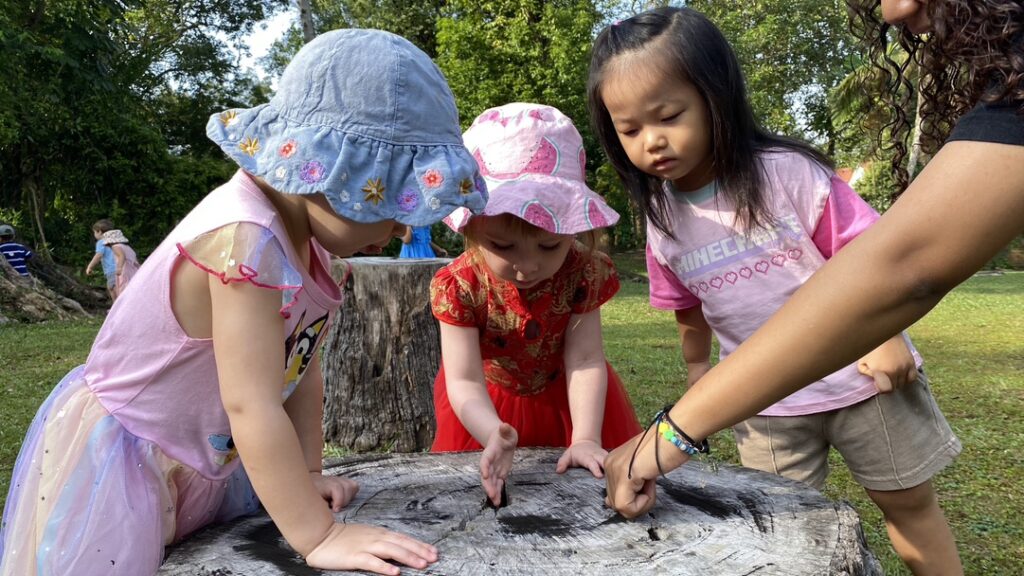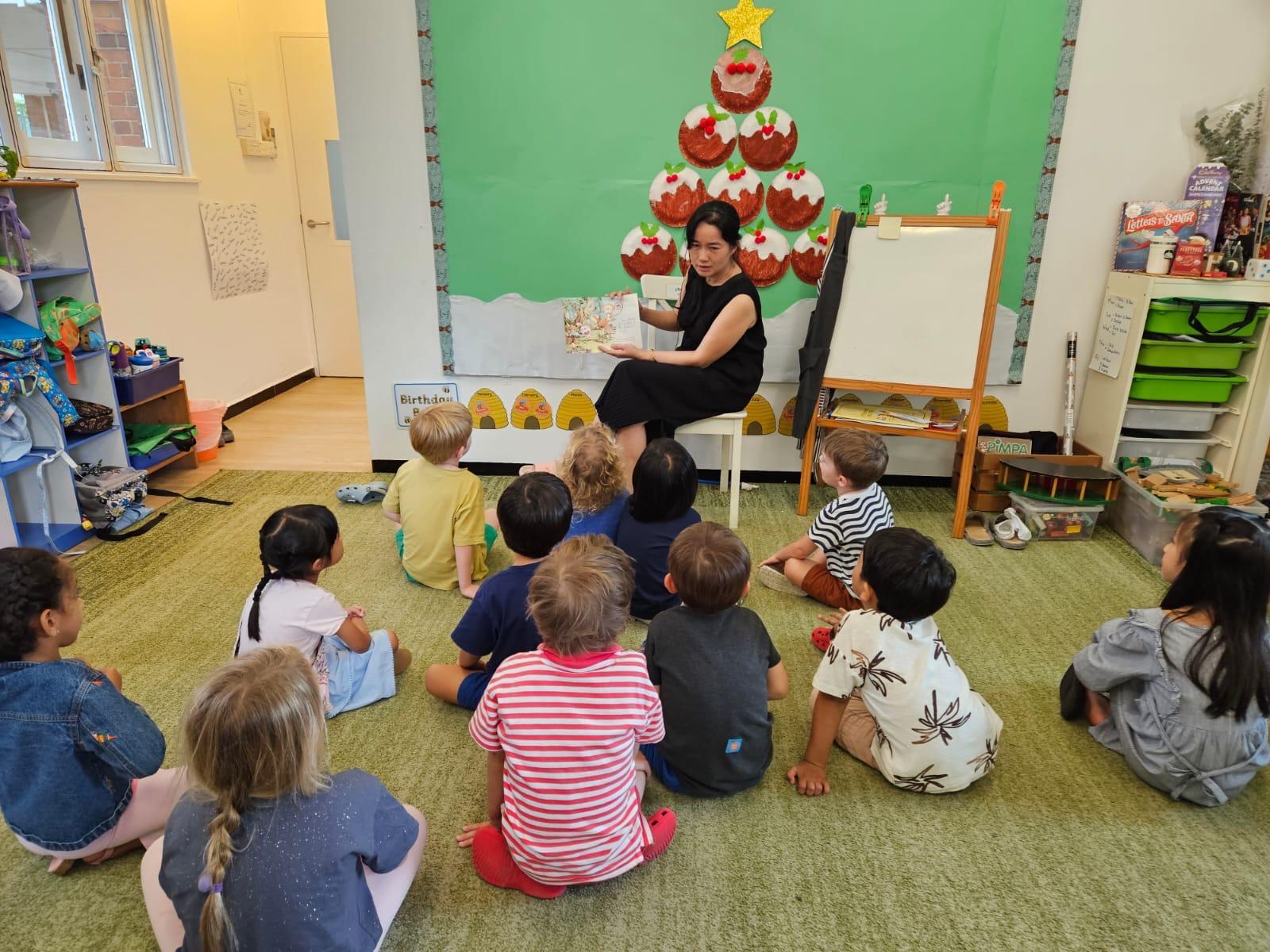Small classrooms: why less really is more
By Rohini Ramadas, Principal, Rain Trees International Kindergarten.
Over the years I have watched kindergarten children flourish in settings where the teacher can really see every learner, not as a headcount but as a whole person. Small classes give teachers the space to notice the tiny sparks: the hand that hesitates before speaking, the grin that follows a risk well taken, the moment a child’s face lights up when a question finally makes sense.
The research supports what I love to see every day. As an example, the 4-year study known as Tennessee’s Project STAR back in the 1980’s found that children placed in smaller classes in the early years achieved higher test scores and showed lasting benefits as they progressed through school. Research reviews also point to a small to moderate positive effect from reducing class size, especially when it allows for better teacher attention and a warm classroom climate.
Small Class Sizes making a Big Impact
From my many years of teaching and leading Rain Trees, I have noted three practical ways small kindergarten classes change learning:
- More meaningful interactions
With just a few children, I can give targeted feedback, catch misconceptions in the moment, and extend thinking through quick one to one or very small group conversations.
- Stronger classroom culture
Calm, predictable routines and clear expectations are easier to build. Children take more risks and participate more when the group feels safe and known.
- Better differentiation
Even in kindergarten, children develop at different paces and come with different strengths. Teachers can tailor activities to help those ready to explore further and support those taking their first small steps without leaving anyone behind.
Rain Trees International, here in Holland Village, is lucky to welcome children from many different nationalities. Our small classes help us respond to everyone equally, with a variety of cultural backgrounds and ways of exploring the world. When I can speak individually with a child three times in a lsession instead of once, I can better support their language development, sense of belonging and learning confidence. This is especially important at an age when these foundations matter most.
Parents often ask whether smaller classes are simply nicer or if they make a real difference. My answer is that they are both. They make the school more joyful, and they increase the chances that every child’s potential is recognised and nurtured, even at the pre-school level.
We always welcome parents to come and see Rain Trees in action. When you come, you’ll see why less really is more!
Source: Project STAR, which stands for Student/Teacher Achievement Ratio, was a four-year Tennessee experiment conducted in the late 1980s to study the effects of class size on student performance. It randomly assigned students and teachers in kindergarten through third grade to one of three class types: small classes (13-17 students), regular classes (22-25 students), and regular classes with a full-time teacher’s aide. The study aimed to determine if smaller class sizes would lead to improved academic outcomes

Brain Development Peaks Before Age 5
The first five years of life represent the most critical period for brain development — with over 90% of brain growth occurring before a child turns five. Harvard University’s Center on the Developing Child confirms that during this time, children form more than 1 million neural connections every second.
This window is when children’s capacity for learning, forming relationships, developing self-regulation and curiosity is at its highest.
At Rain Trees, our early years curriculum (based on the EYFS – British Curriculum) is designed specifically to nurture this development, not rush it. We focus on the foundations for lifelong learning — critical thinking, social confidence, resilience — rather than premature academics.
Fun Is Not Frivolous, It’s Fundamental
We believe something very simple: children learn best when they’re having fun. And that’s not just philosophy — it’s neuroscience. Play activates the brain’s reward systems and supports the development of executive function skills, which are essential for everything from planning and memory to self-control.
As early years specialist Kathy Hirsh-Pasek puts it so well, “Play is the work of childhood.”
Through play, children explore their world, test ideas, express emotions and connect with others. That’s why at Rain Trees, learning looks like dancing, building, painting, chatting, running, and always, laughing.
At Rain Trees, we don’t just know the science — we live it. Our team brings deep early years experience, a passion for nurturing each child, and a firm belief in the power of play-based learning. Families choose us not for flashy technology or rigid academics, but because we honour what the early years are meant to be: a time of joy, growth and wonder.
Come and see our small classes, big garden and fun learning in action. Arrange to visit Rain Trees or speak to the team to learn more.
References
Play is the work of childhood: https://www.royalgazette.com/other/lifestyle/article/20110203/letting-your-children-be-children/
Why small class sizes matter: https://classsizematters.org/research-and-links/
Playing outside why it’s important for kids: https://www.healthychildren.org/English/family-life/power-of-play/Pages/playing-outside-why-its-important-for-kids.aspx
Benefits of learning in natural settings: https://publications.naturalengland.org.uk/file/5883452499427328
Brain Architecture: https://developingchild.harvard.edu/key-concept/brain-architecture/
Rain Trees International Kindergarten & PreSchool is based in Holland Village in Singapore and was established in 1999 and attracts internationally minded parents working and living in Singapore.

